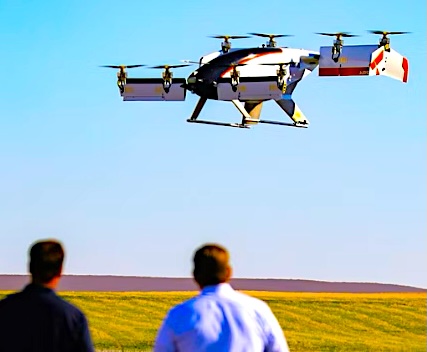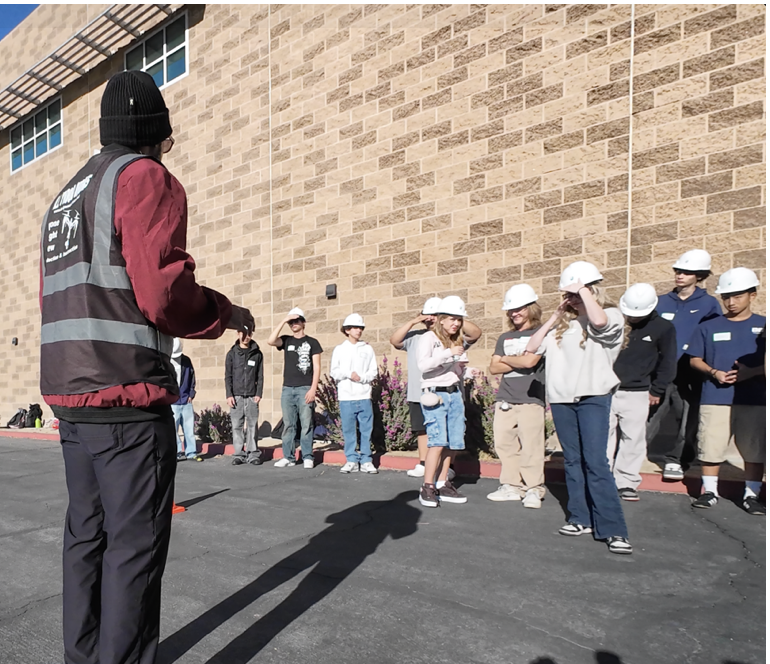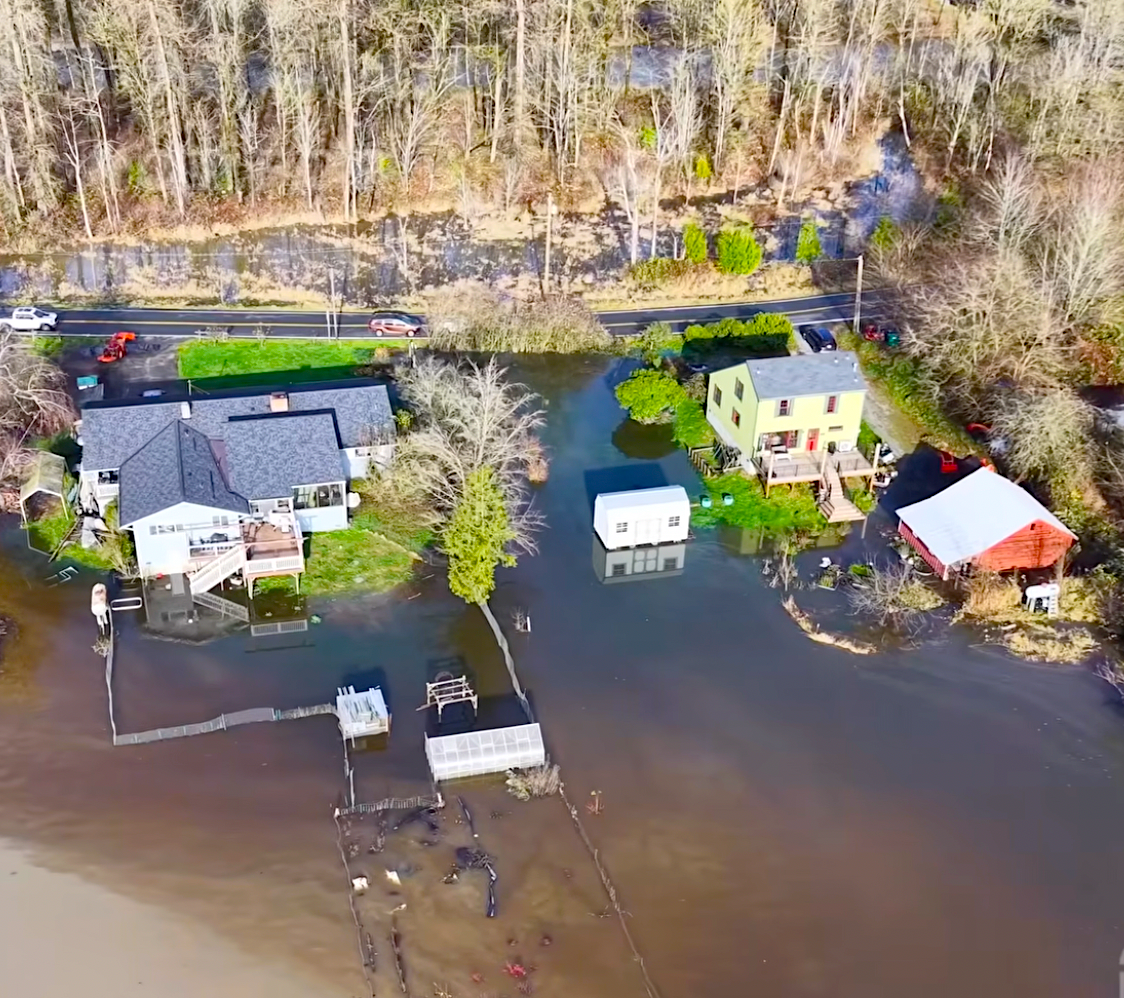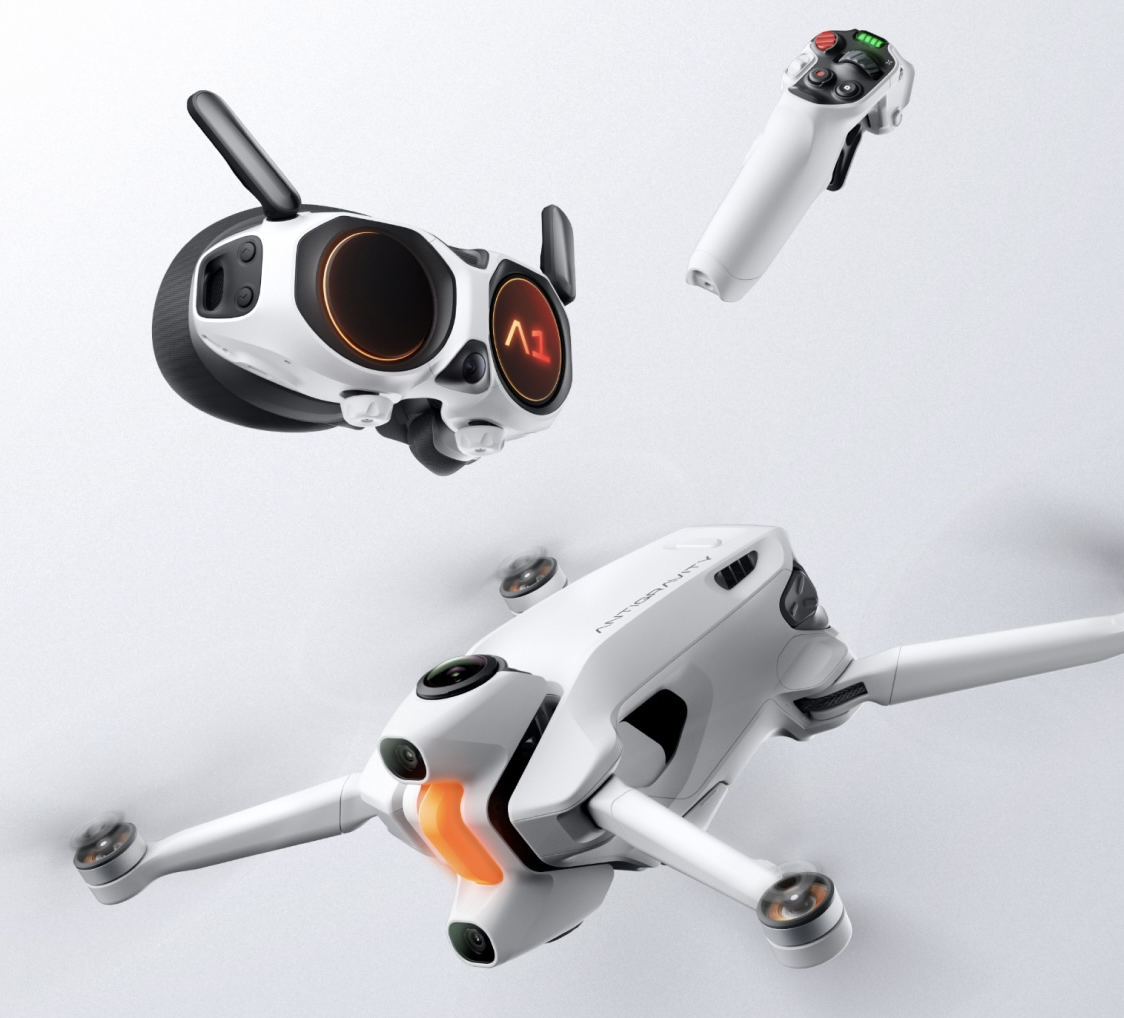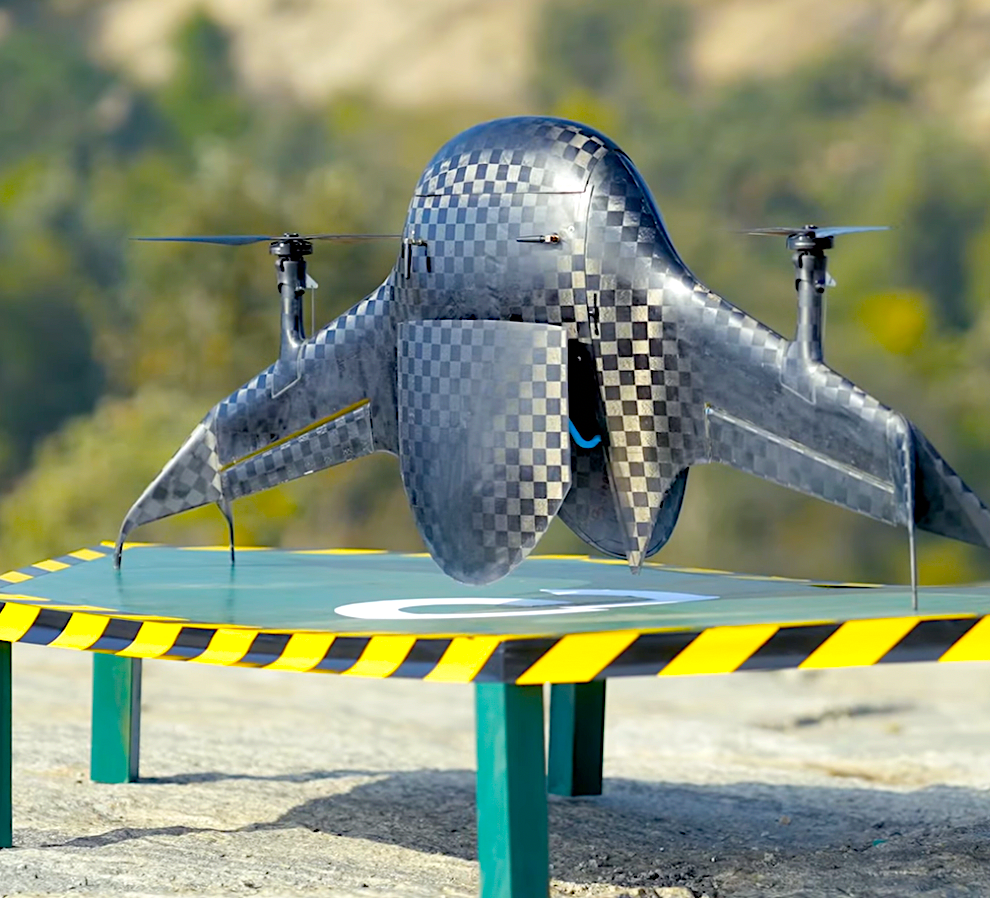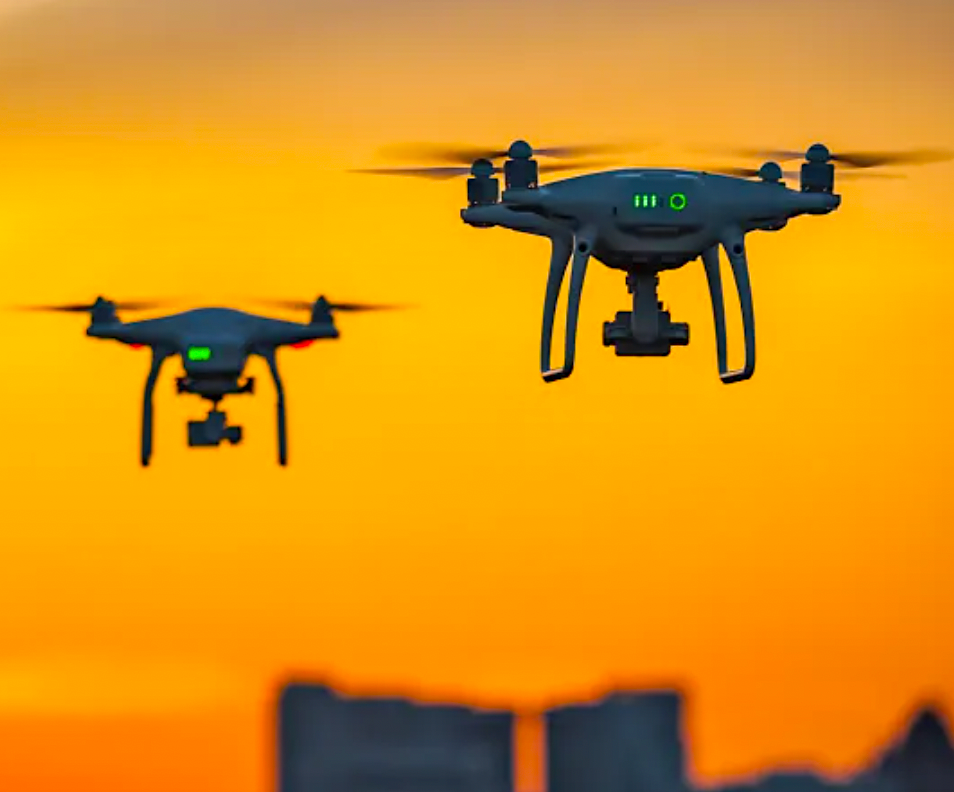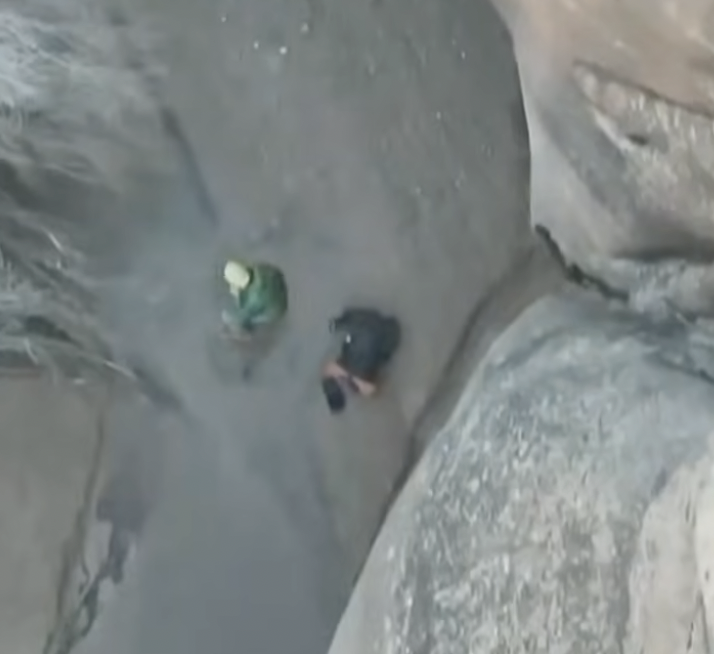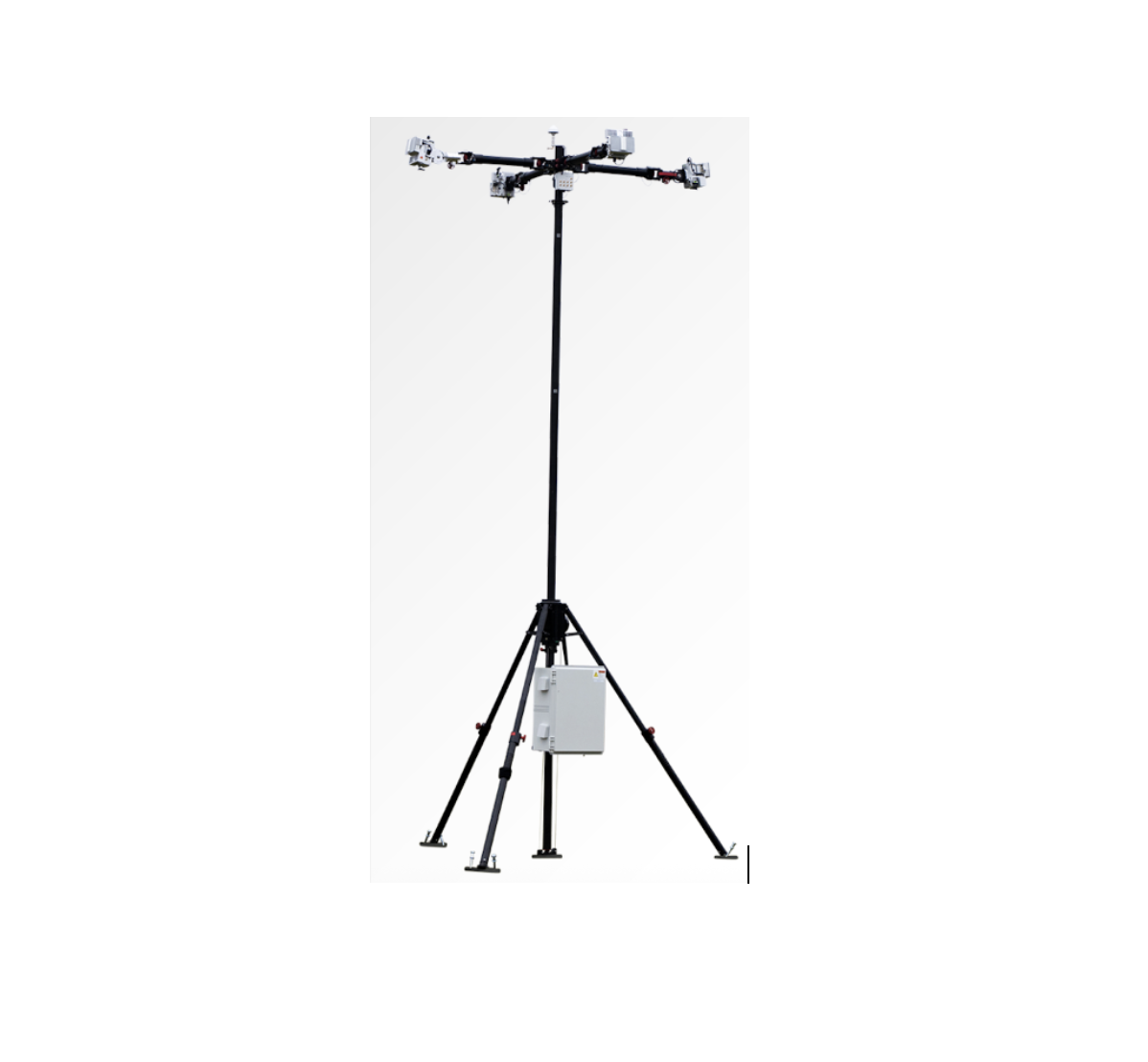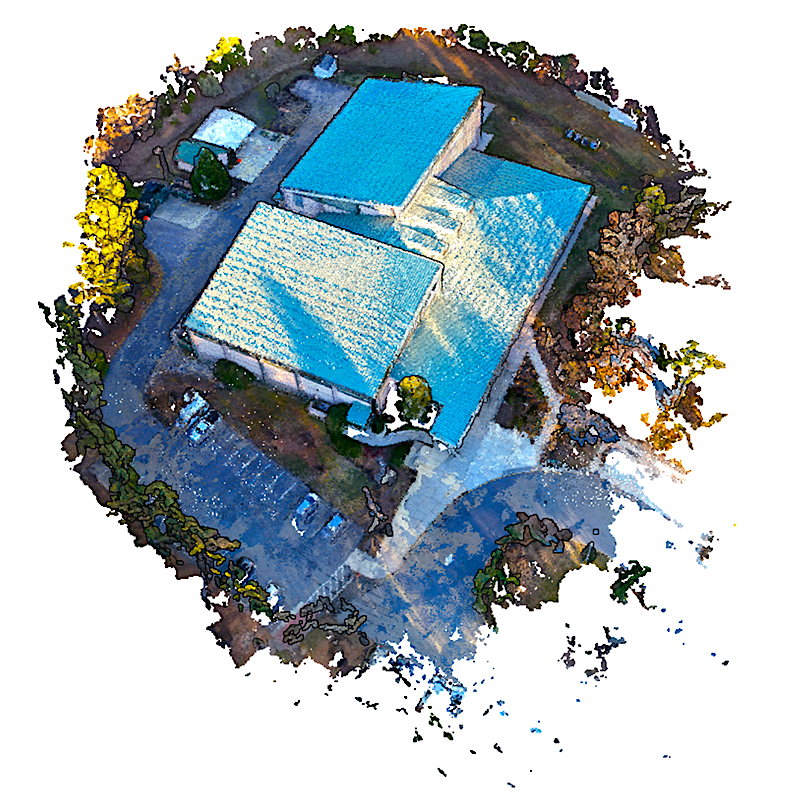Featured NewsTrending NewsDoes the FAA Part 107 Test need to be updated?
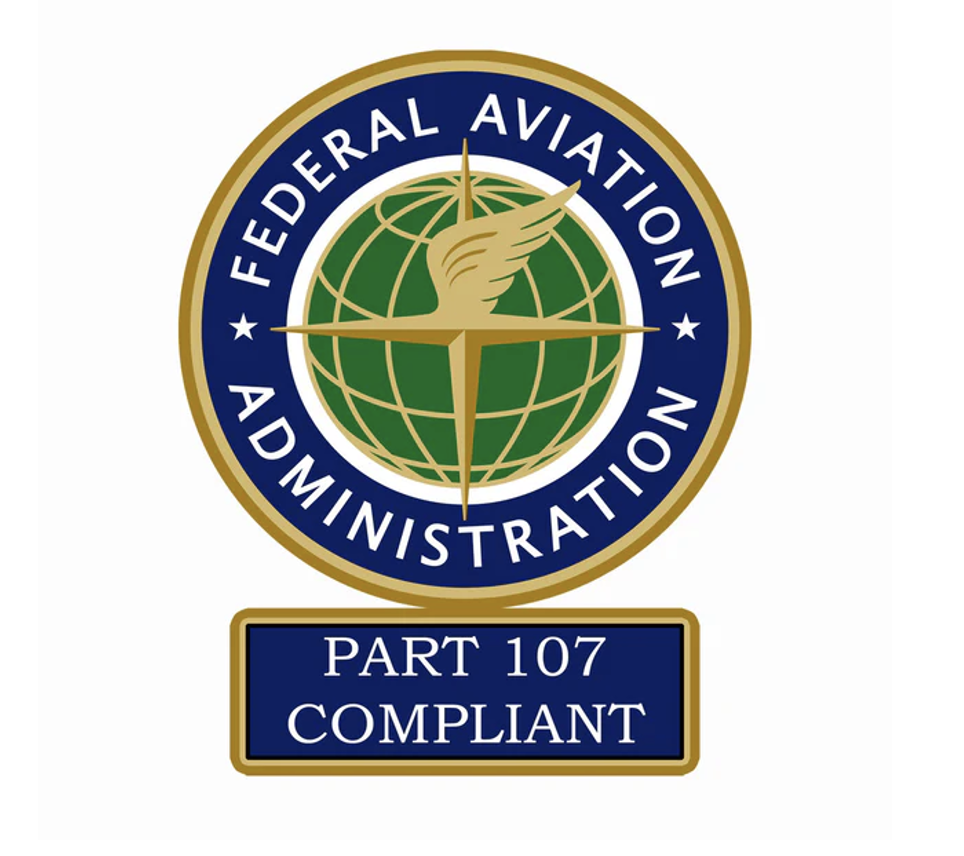
30 May 2024
During a dinner at the recent AUVSI Exponential 2024 convention, The Droning Company's Stuart Smith, Jon McBride, Chris Fravel, Tim Brazzel, and Sam Karp began a conversation about the viability and relevance of the FAA Part 107 test for today's commercial drone pilots.
Does the test need to change to best serve the drone community?
We decided to dig into the subject, with four of us contributing to this artlcle, along with industry experts Greg Reverdiau and Vic Moss.
Read on to absorb our thoughts...
Jon McBride

The FAA Part 107 regulations went into effect on August 29, 2016. These regulations established the rules for the commercial operation of small, unmanned aircraft systems (sUAS) in the United States. Part 107 replaced the previous Section 333 exemption process, providing a more streamlined and standardized framework for commercial drone operations. But remember, COMMERCIAL OPERATIONS.
In the context of drone operations, the Federal Aviation Administration (FAA) defines commercial use as any operation of an unmanned aircraft system (UAS) in exchange for compensation or hire.
Here are some examples of activities that would typically be considered commercial drone operations:
• Aerial photography or videography services offered for hire.
• Inspection services provided to businesses or individuals, such as infrastructure inspection, roof inspections, or agricultural monitoring.
• Real estate agencies using drones to capture images or videos of properties for marketing purposes.
• Filming movies, commercials, or other media productions using drones.
• Providing drone-based surveying or mapping services to land developers, construction companies, or environmental agencies.
It's important to note that even if no money changes hands, if the drone operation is conducted for the benefit of a business or organization, it may still be considered commercial in nature. For example, if a real estate agent uses a drone to capture images of properties they are selling, even if they don't charge separately for the drone services, it would likely still be considered a commercial operation because it serves the interests of the real estate business.
As we look at current process to acquire a Part 107 and operate under the current rules. Let’s look at some of the issues with the certification.
Complexity and Regulatory Hurdles: Some operators find the process of obtaining a Part 107 Remote Pilot Certificate and complying with the associated regulations burdensome and complex. This includes passing the aeronautical knowledge test, maintaining currency, and staying updated with evolving regulations. Many parts needed for the knowledge to pass the test are antiquated or don’t apply to everyday operation, such as runway numbers or ever reading a METAR.
Restrictions and Limitations: Part 107 imposes various restrictions such as line-of-sight requirements, daylight-only operations, and altitude limitations. These restrictions can limit the scope of operations for commercial drone operators. Waivers to the 107 are needed to comply which are sometimes based on who you know, not what you know.
Lack of Flexibility: Some operators argue that the regulations are too rigid and do not accommodate certain use cases, such as beyond visual line of sight (BVLOS) operations or operations over people, which could unlock significant commercial opportunities.
Regulatory Uncertainty: Despite the existence of Part 107, there can be uncertainty regarding specific regulatory interpretations and enforcement actions, which can create challenges for operators trying to comply with the regulations. We understand that this a new industry, but now the 107 is within its 7th year, still many questions remain for operators to do their jobs.
Privacy Concerns: The use of drones for commercial purposes raises privacy concerns among the public. While Part 107 includes provisions related to privacy, there are ongoing debates about the adequacy of these provisions and the need for additional safeguards for both remote pilots and bystanders.
Safety Issues: Although Part 107 includes safety requirements, there have been instances of unsafe drone operations, including near misses with manned aircraft and incidents involving reckless behavior by operators. Enforcement of safety regulations remains a concern.
Integration with Manned Aircraft: As the number of drones in the airspace increases, there are challenges associated with safely integrating drones with manned aircraft and ensuring that both can operate harmoniously without compromising safety. Is Remote ID supposed to help with this or just be another regulation that makes it more difficult?
Technological Advancements Outpacing Regulation: The rapid pace of technological advancements in the drone industry sometimes outpaces regulatory developments, leading to regulatory lag and uncertainty regarding the appropriate regulatory framework for emerging technologies. Some may choose to not complay with regulations because of this.
Overall, while Part 107 has been a significant step forward in regulating commercial drone operations in the United States, there are ongoing challenges and areas for improvement to ensure the safe and effective integration of drones into the national airspace system.
Will the possible upcoming 108 help with these current issues?
Stuart Smith
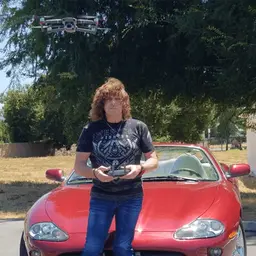
Back in 2020, my band Heaven & Earth had released its fifth album. The press was great, and we started rehearsing for a world tour to support it. Then COVID hit.
As I’m supporting the most expensive creature in the world—a teenage daughter—I thought to myself, “Well, I can’t sit around for a year and a half or however long this will take doing nothing.”
As I’d been flying drones for a couple of years just for fun, I thought that I’d go out as a professional pilot. On the recommendation of many drone pilot friends I promptly signed up for Greg Reverdiau’s Pilot Institute Part 107 course and sat down to begin my studies. The course was well laid out and easy to follow and once you’d completed a section, Greg would offer up a test to see how well you’d absorbed it.
All this was fine until I came to the parts about taxiways on airfields and airport call signs and I thought to myself, “Why is Greg teaching me about this? My drone doesn’t need a runway and it has no radio. Why do I have to learn all this?”
Don’t get me wrong, Greg was doing his job. The FAA requires you to know all this to pass the Part 107 test, but why?
My father, Bob Smith, was a jet fighter pilot in the Royal Air Force and in The Black Arrows—which was one of the worlds first jet aerobatic teams, flying Hawker Hunters. At the 1958 Farnborough Airshow, they performed a loop with 22 fighters, a record that has not been broken to this day, and a 16 aircraft barrel roll. He went on to fly many other jet fighters with the RAF, and upon leaving, he joined the ranks of many of his colleagues as a commercial airline pilot where he had to qualify with the FAA.
I told him about the Part 107 course that I was taking and showed him the books Greg had recommended. The first comment he made was, “Well the FAA haven’t made any effort whatsoever to create a suitable test for drone pilots. They’ve just basically dumped the FAA Airman Knowledge Test on all of you!"
Timothy Brazzel

The Part 107 test, administered by the Federal Aviation Administration (FAA), covers a range of topics beyond just the operation of small, unmanned aircraft systems (sUAS), commonly known as drones. While some of the information may seem unrelated to the practical aspects of flying a drone, the FAA stresses that covering such topics is crucial for ensuring safety and regulatory compliance in the national airspace. However, some of the topics and information covered, can be up for debate as to whether or not it’s really necessary to learn and know. From my own experience, after taking the Part 107 test, I left the testing center feeling excited that I passed. However, I had the question in the back of my mind: Now what? And how does this information help me become a better drone pilot? Especially, when 80% of my part 107 test deals with unrelated drone topics that have nothing to do with using or understanding how to use sUAV’s but instead, focuses heavily on covering the use of sectional charts and METARS etc…
I’m fine with learning about Airspace Regulations, because understanding airspace classifications, restrictions, and regulations is essential for safely navigating drones in different environments and avoiding conflicts with manned aircraft. I’m fine with learning about (Weather Knowledge) as weather conditions can significantly impact drone flights. Therefore, pilots need to be aware of how various weather phenomena such as wind, precipitation, and temperature affect flight operations. I’m fine with learning about (Aeronautical Decision-Making) as it pertains to drones, as pilots must be capable of making sound decisions in various scenarios, including emergencies, to ensure the safety of both the drone and people on the ground. I’m fine with learning about (Emergency Procedures), knowing how to respond to emergencies, such as equipment failures or unexpected weather changes, is crucial for mitigating risks and preventing accidents. And lastly, (Aircraft Performance) which is very important because by understanding the performance capabilities and limitations of drones helps pilots operate them safely and efficiently.
While some of the information covered in the Part 107 test may not directly relate to the mechanics of operating a drone, it contributes to a comprehensive understanding of aviation principles and safety protocols. However, in my opinion, it would greatly benefit the drone pilot more to learn and understand the different functionalities of using different types of drones, from flying them to understanding how to maximize the potential of UAV’s when using them in certain situations and scenarios. Also, being able to test one’s knowledge on the different types of industries, and how drones are used in those different industries. I hope my thoughts and opinions provoke meaningful future conversations amongst the drone community that fosters the initiatives taken to create the change we want to see that benefits all drone pilots.
Chris Fravel

In the United States the Federal Aviation Administration (FAA) requires all drone pilots intending to fly drones for any purpose other than pure recreational enjoyment to earn and maintain a Part 107 license.
While I have your attention, that means that money does not need to change hands in any capacity for it to be considered a commercial drone flight.
You could do it as a favor for your friend’s business. It’s still a commercial drone flight. You could do it for a local charity to assist them with reaching more people through compelling imagery. It’s still a commercial drone flight. You could do it for trade with any type of business or service provider and guess what? It’s still a commercial drone flight.
So, as of the writing of this article, unless you are flying your drone purely for your own personal enjoyment, you can safely assume you are flying a mission that requires a Part 107. Now that we have that cleared up, let’s move on…
While the jury is split on whether or not Part 107 makes sense on a grand scale, I believe that while it is necessary to have a license and/or certification that ensures drone pilots understand the rules of navigating airspace safely with their UAV in the United States, I do believe we got it all wrong when it comes to the framework we established for the licensing.
To expand upon that, I will point your attention to our maple-loving neighbors to the north: Canada. Instead of a Part 107 license, Canada has two pilot certificates that are based entirely on the type of operation and/or aircraft the pilot is flying. Pilots must obtain at least one of the certificates depending upon the category of drone they fly and the type of mission they are flying. As this is a panel-style article, I only have so much space allotted to me for my contribution, so instead of outlining each certificate, you can find the differences and conditions for each by clicking here.
Keeping all of that information in-mind, we should all be asking why the FAA established the Part 107 as a guideline for drone operations based upon intent rather than aircraft and/or mission category? Intent is hard to prove or disprove. A prime example of this is the intent-based loophole where a drone pilot can take photos and videos or collect data from a given area for their own personal enjoyment, but then sell that imagery and/or data to a person or company after the fact. The reason this is legal without a Part 107 is because the original intention behind the flight was for recreational enjoyment, not for commercial purposes. The business arrangement after the fact had no bearing on the original intent of the flight, it is just a serendipitous coincidence (wink, wink). No, in all seriousness, don’t make a habit of exploiting that loophole—a paper trail will absolutely burn you if the FAA cares enough to investigate.
To wrap things up, I’ll share with you my answer for fixing the Part 107 standards. While I am in alignment with my co-writers that some of the information pilots are required to know to pass the Part 107 exams is outdated, convoluted, and largely irrelevant for general flight operations (looking at you sectional charts, METARs and TAFs, and airport sign and runway markings), I think we can go a layer deeper and redefine what criteria needs to be met for licensure and certification to be required. If I were elected as Grand Puba of the FAA tomorrow, here’s what I would do to reformat things:
• Drones Under 250-grams in total take-off weight do not require a license or certificate of any kind to operate, no matter if the flight is commercial or recreational. LAANC approval still applies in controlled airspace and TFR and NFZ regulations also still apply to these drones and operations.
• Drones under 55lbs. in total take-off weight only being flown in Class G airspace require a TRUST certificate for any kind of operation, commercial or recreational. These pilots are not cleared to fly in controlled airspace, at night, or over people, no matter what measures are taken to mitigate risk. TFR and NFZ regulations also still apply to these drones and operations.
• Drones under 55lbs. in total take-off weight being flown in controlled airspace require the Part 107 license. LAANC approval still applies in controlled airspace and TFR and NFZ regulations also still apply to these drones and operations.
• Drones under 55lbs. in total take-off weight being flown in any airspace over people and/or at night require a new Part 108 license. This new Part 108 license entitles holders the same privileges of a Part 107, with the additional flexibility to fly in more populated areas and in low-light conditions.
• Drones over 55lbs. in total take-off weight being flown in any airspace in any scenario (over people, at night, etc.) require the new Part 109 license. This new Part 109 license entitles holders to the same privileges of a Part 108 and Part 107, with certain criteria needing to be met as per FAA air-worthiness certification standards and pilot understanding of advanced operational procedures.
If I had more space to contribute to this discussion, I would elaborate further on that general outline, as I am well-aware it does not cover all the nuances and technicalities that could possibly come into play. However, the general idea is to change the purpose of the FAA required licensure for remote pilots from intent-based to category/operation-based. This eliminates gray areas in the rules, eases the burden of discernment on the FAA when it comes to waiver applications and exceptions for operations, and empowers pilots to invest what they need to invest to accomplish their goals with drones – nothing more and nothing less. Simplify the knowledge needed to earn the licenses and simplify the system entirely for smoother operations on a grand scale. That’s how we improve drone operations in the United States and change what it means to be a licensed drone pilot.
Greg Reverdiau 
Having trained nearly 100,000 Remote Pilots in the last 6 years via Pilot Institute, I can see first-hand the topics that Part 107 applicants struggle with, what they like and don’t like. I also spend time in Facebook groups, in Pilot Institute’s community page, and I received a lot of questions every day. This is where the rubber meets the road. This is where new and seasoned pilots expose their lack of understanding and lack of knowledge. The questions that come back over and over are things that were not properly taught or tested on the exam.
The FAA requires us to teach airspace. The good ol’ manned aircraft airspace. The Class C that goes to 4000 feet AGL. The Class B that goes to 10,000 feet MSL. Even Class A that the majority of Part 61 pilots will never fly into. And using Sectional Charts, which are great if you’re flying at 100 knots in a straight line but give zero granularity to UAS pilots flying below 400 feet from one spot.
In reality, we have this beautiful system called LAANC. You might wonder: how many questions about LAANC on the FAA Remote Pilot exam? None. Because it’s not a topic highlighted in the Airmen Certification Standard, meaning the FAA does not deem LAANC a topic required to become a Part 107 pilot.
Many students complain they need to learn about taxiway and runways signs. And lights. And traffic patterns. My answer always is the FAA allows you to fly in ALL of the National Airspace System, including airspace close to airports. Should you have to learn about taxiway signs? Probably not. In order to fly that close to an airport, you need to submit an airspace authorization on the FAA DroneZone website. Why not require the completion of a mini-FAA course on airport operations, completed on FAASafety.gov, before you can receive that authorization. My guess is that 90 to 99% of Remote Pilot will never fly that close to an airport, and by the time they do, they will have forgotten the knowledge anyway.
What about aerodynamics of a fixed wing aircraft? The vast majority of Remote Pilots are likely flying a multirotor aircraft. Yet most of the aerodynamics questions deal with fixed wing aircraft. Stalls in high bank angle situations doesn’t apply to multi-rotors. Let’s add topics such as propeller icing in cold and humid situations instead. Let’s add questions about how multi-rotors actually fly.
And let’s not talk about Aviation Weather Services… You know, the METAR, TAF, area charts and other 1950s technology that even manned aircraft pilots struggle with. Let’s instead focus on the actual effect on aircraft performance of cold and hot weather, the proper weather planning of a mission, Kp indexes, the methods to obtain weather that is easy to read. How many part 107 who don’t have a part 61 pilot certificate have actually read a METAR and a TAF after getting their ticket? Close to none.
Now let’s talk about the topics that are already in the Airmen Certification Standards but that need more emphasis. Of the 12 confirmed collisions between manned and unmanned aircraft, in all cases the UAS pilot said: “I didn’t see the aircraft in time to get out of the way”. And the manned aircraft pilot said the same thing.
14 CFR 107.31 – Visual Line of Sight is one of the most confusing pieces of regulation in the industry. How many times have you heard: “well, as long as my Visual Observer can see the drone, I don’t need to”. “I can add lights to my drone to see it from further away”. The answer is - several time a day on Facebook. And of course, it’s incorrect.
How many times have you seen someone taking off and immediately putting their head down to look at the controller without ever moving their head up. “I will hear a helicopter if it comes nearby”. Until you don’t. Until there are walls bouncing the sound of the helicopter around, making you think it’s coming from the opposite direction. All of this to say I would like to see more emphasis on Aeronautical Decision Making. On risk assessment and risk management. On testing the regulation that matters. The regulation that leads to mid -air collisions.
Part 107 is eight years old. It has gotten one update in those eight years. An update to reflect changes in regulation. It’s time to make the test about the things that matter, the things that will prevent a mid-air collision. The things that will make ALL airspace users safer.
Vic Moss

In 2012, Congress tasked the FAA with developing a way to integrate civil (non-governmental) unmanned aircraft into the National Airspace System (NAS). They saw the writing on the wall and wanted the FAA to get out in front of this new technology. Section 332 of what became 49 USC 40101 gave the FAA the responsibility of safety integrating drones into the NAS, and it gave them a deadline of 270 days from enactment to come up with that plan. Thus, the process of 14 CFR 107 was birthed. It took until August 29, 2016, for the FAA to release what it now called the Remote Pilot Certificate, or more simply, 107.
While the FAA more or less made the 270-day deadline for the plan, the rest of the process was time consuming and complicated. The most complicated part of the entire process was data. More precisely, lack of data. The Federal Government was tasked with coming up with safety plans for a new technology that had very little history of safety. And since the FAA’s main goal is safety of the NAS, they had to pull from historical records of manned aviation, and then try to shoehorn that data into a set of rules for a relatively new technology. For the most part, that worked. But it quickly became evident that changes would need to be made. But the lack of data still stalled those changes.
Whether by happenstance or design, when 107 was announced, there were a number of those regulations that had the ability to be “waived”. All you had to do with apply for a waiver, and the FAA would let you fly outside the bounds of that particular regulation, with the understanding that you would follow your new set of safety mitigations. “All you had to do” is obviously an overstatement of the process. Waivers were tough to get. Very tough.
But the industry slogged on, the FAA ended up with some good data, and as such, we started seeing some changes in the questions asked during 107 testing. No more night waivers in one example, as is the new rules for flights over people. And BVLOS (the final frontier for scalable BVLOS operations) is coming up as well. Things are changing. But not fast enough for an industry that changes so rapidly it very difficult to keep up.
And I don’t think anyone in the FAA, or in this industry, could have foreseen just how popular and prolific UAS use was going to be. UAS quickly become the fastest growing segment of aviation. As of 5/1/24, there are 389,737 Remote Pilots in the U.S. And well over 1,000,000 recreational flyers. Those numbers alone outnumber manned aviation by almost 2:1. According to FAA’s latest numbers, fully 3/4 of all Remote Pilots do not possess any additional aviation experience. Becoming Remote Pilots was their first interaction with the aviation community. I count myself in that very large group of aviators. And I believe that threw a wrinkle into the FAA’s theory behind the Remote Pilot Certificate test. I think they assumed most folks getting their 107 would be experienced manned aviators of one type or another. That was obviously wrong. And some of the test questions still reflect that.
Some of those seemingly pointless questions are already pointed out in this article. All with valid points. Does a Remote Pilot really need to learn how to read a METAR? Heck, many manned aviators don’t even bother. With modern ways to find out weather, there is zero need. Runway markings are another. For the 99.99% of all Remote Pilots out there, they’ll never see runway marking while piloting their drones. And sectional charts are another section of the 107 testing that desperately needs to be scaled back. Sectional Charts are all but useless for unmanned aviators. We certainly need to know some of the basics, but for the most part, they’re pointless for UAS. They don’t have much of the critical data we need to make the decision of whether or not we can safely complete the task we’ve been asked to perform with our aircraft.
During one of last year’s Advanced Aviation Advisory Committee (AAAC) meetings, Kenji Sugahara proposed that the AAAC form a task group the explore 14 CFR 107 and see just how much of it actually applies to current day to day UAS operations. We have millions of data points now for the FAA to explore this. But the FAA decided that wasn’t a priority.
Maybe it’s time to revisit this suggestion again.
Let’s take these data points, use them to analyze all sections of 14 CFR 107, update them, and then adjust the Part 107 test accordingly. We can make it more relevant to today’s technology, increase Remote Pilot proficiency and knowledge, thus making what is already the safest form of aviation in the world even safer.
